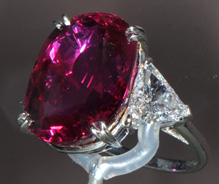Ruby
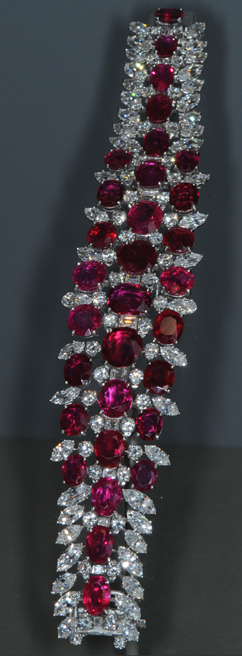 |
Ruby is made up of the mineral corundum, which is aluminum oxide (alumina, Al2O3). It becomes the precious stone when it has a a small impurity of chromic oxide which gives it the rich red color. If the corundum has other impurities to give it other colors, it is called sapphire. 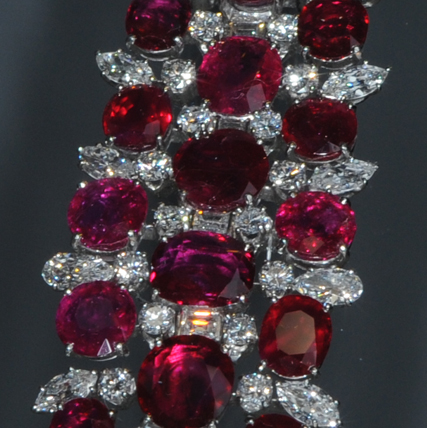
|
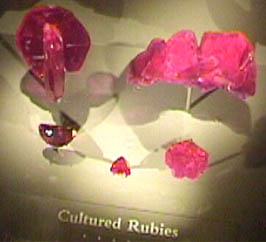 |
These are man-made or "cultured" rubies. All the samples are on display at the Museum of Natural History. Ruby is made up of the mineral corundum, which is aluminum oxide (alumina, Al2O3). It becomes the precious stone when it has a a small impurity of chromic oxide which gives it the rich red color. If the corundum has other impurities to give it other colors, it is called sapphire. Sapphires and rubies exhibit double refraction, which resolves a beam of incident light into two beams which emerge with different colors. These two gems also sometimes exhibit a six-pointed "star" effect from reflection off microscopic, needle-shaped rutile crystals which intersect at 60° angles. |
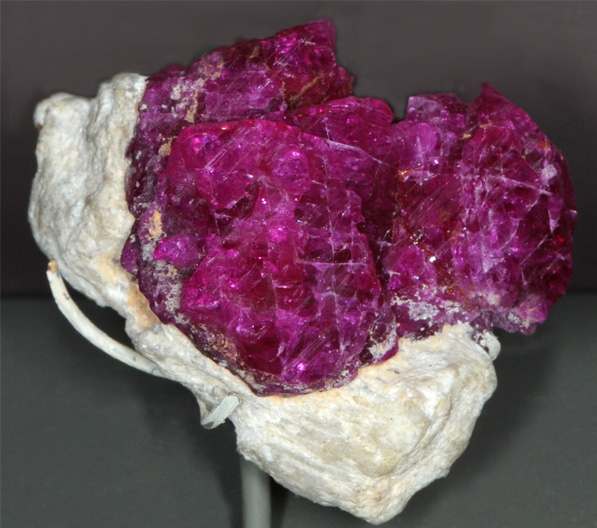 |
These are natural ruby crystals in a matrix of white marble. Rubies are formed by heat and pressure in limestone-rich clay. These are from Burma. The red color of ruby gems is mimicked by some forms of red beryl , spinel and even pyrope, so not every red gem is a ruby! |
The Rosser Reeves RubyThis 138.7 carat ruby is from Sri Lanka and was owned by Rosser Reeves. The description: "This is one of the world's largest and finest star rubies, with superb color and a well-defined star. Rosser Reeves, an American advertising executive, carried it as a lucky stone and called it his 'baby'." |
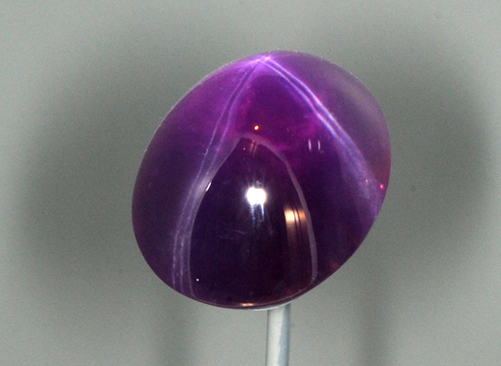 |
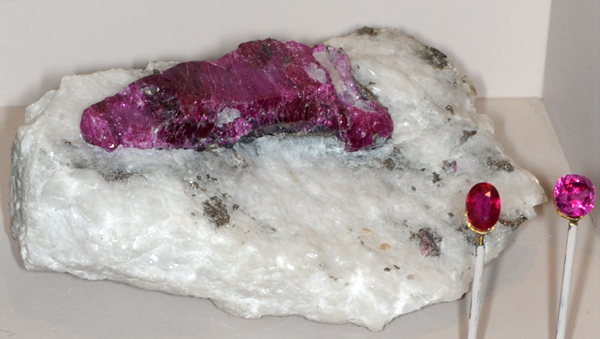 |
This specimen of ruby is about 6 cm long and is from Luc Yen mine, Yen Bai, Vietnam. The two gems are 2.1 and 3.0 carats. 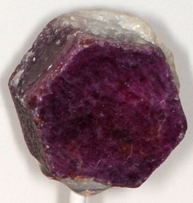 This ruby sample is about 2 cm wide and is from Ampanihy, Madagascar. |
This ruby specimen is about 11 cm across and is from Merkestein, Longido, Tanzania. |
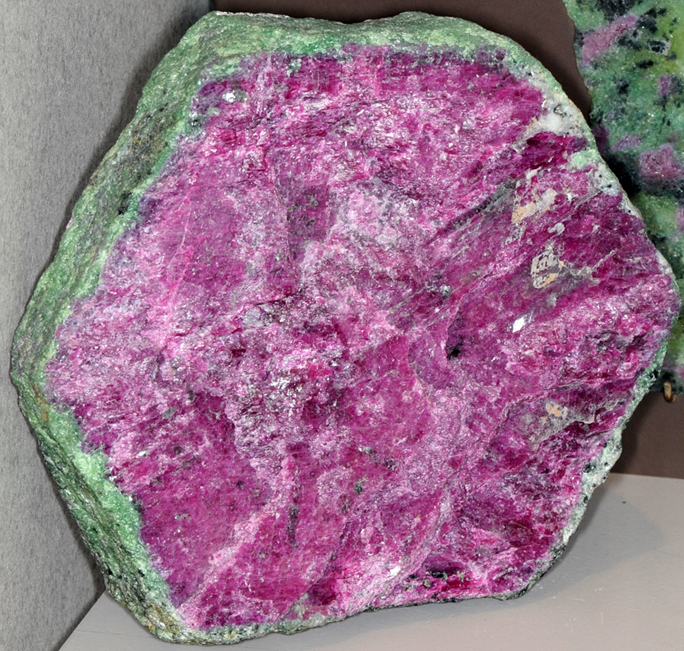 |
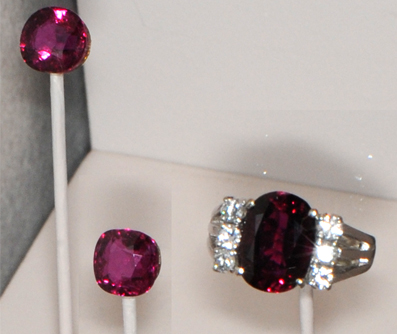 |
These ruby gems at left are 3.8, 3.6 and 5.65 carats and are from Thailand. The ruby sample at right is about 4 cm wide and is from Mogok, Burma. | 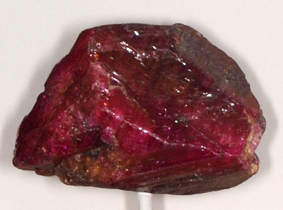 |
This specimen is described as corundum of variety ruby with sillimanite. It is about 20 cm long and is from Bhoodipadaga Forest Reserve, Karnataka, India. |
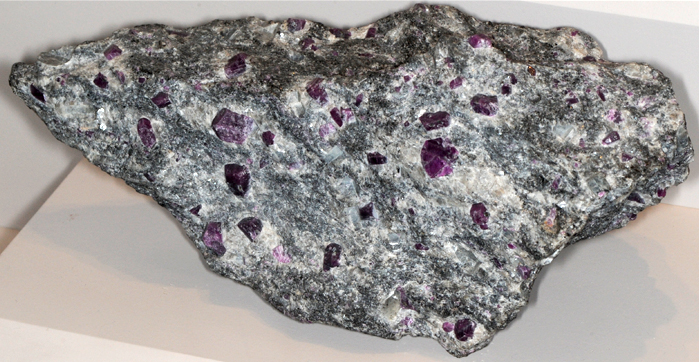 |
<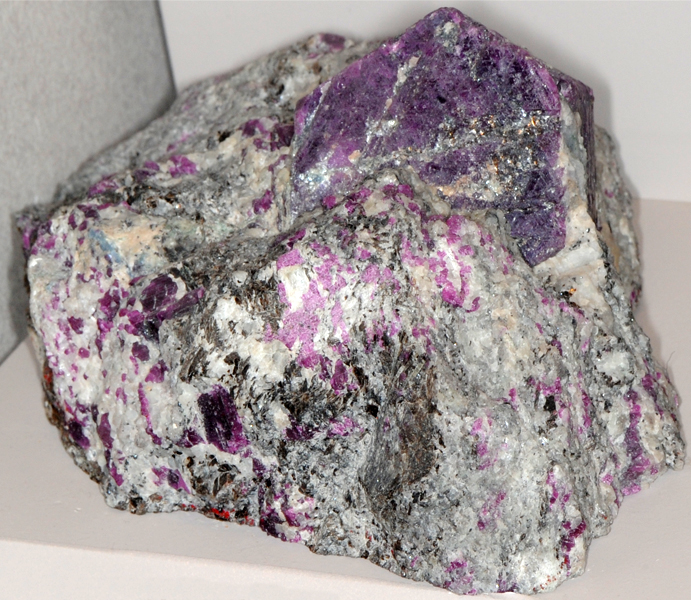 |
This ruby specimen is about 10 cm wide and is from Froland, Norway. |
This ruby specimen is about 14 cm long and is from Merkestein, Longido, Tanzania. |
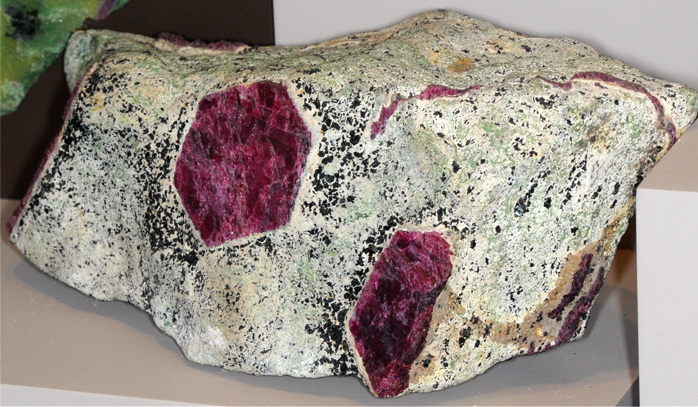 |
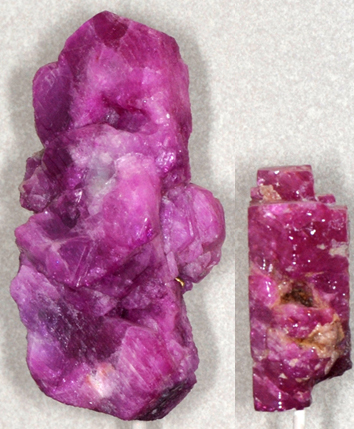 |
These ruby specimens are from Mogok, Burma. The largest is about 3 by 7 cm. The ring has a 3.3 carat ruby along with diamonds. It is from Thailand. 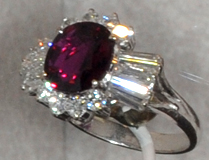 The ruby and diamond bracelet is of unknown origin. | 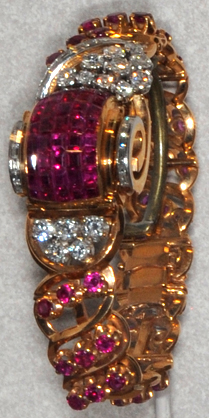 |
| Minerals |
| HyperPhysics*****Geophysics | R Nave |
